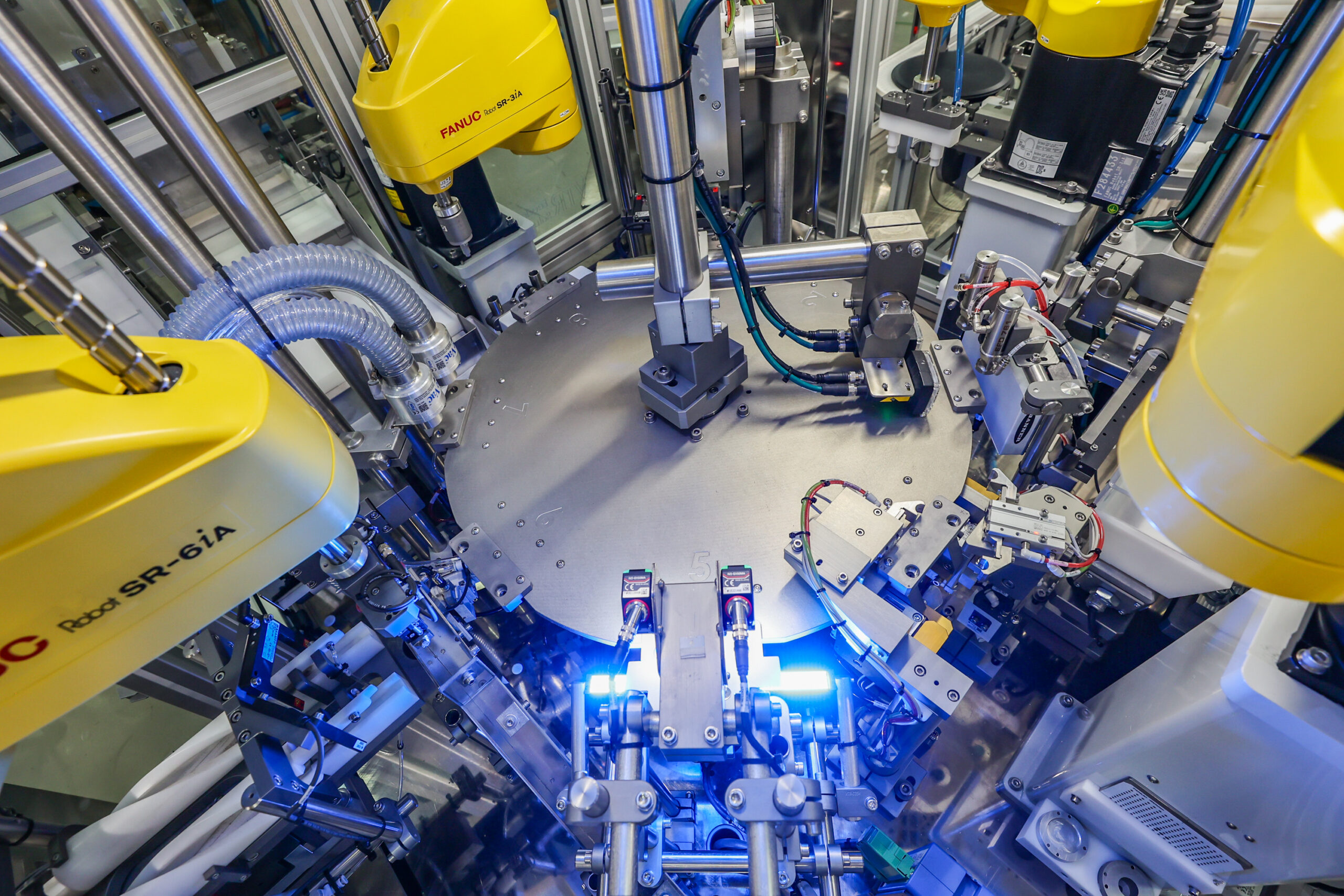Vibratory parts feeding continues to evolve with advancements in technology, and one of the most notable shifts in the industry is the increasing adoption of robotic feeding systems. These systems offer a range of advantages over traditional vibratory feeders but also come with certain drawbacks. This article explores the pros and cons of robotic feeding systems, providing insights to help manufacturers make informed decisions about integrating these technologies into their operations.
Advantages of Robotic Feeding Systems
Flexibility
One of the most significant advantages of robotic feeding systems is their flexibility. Unlike traditional vibratory feeders, which are typically designed for a specific part, robotic feeding systems allow for multiple product types to run within the same chassis.
With adjustments to the vision software and the use of interchangeable grippers, a single robotic system can handle a wide variety of components. This means that with a simple recipe change, the same robotic system can be repurposed for different parts, providing a level of adaptability that is not possible with traditional vibratory systems.
The flexibility of robotic systems extends beyond just part compatibility. They can handle external influences much more effectively than vibratory systems. With the use of trained vision systems, a robotic feeder can identify and ignore unwanted components—such as debris, defective parts, or variations in molding—allowing only the correct components to be processed. Instead of causing system stoppages, these unwanted components simply recirculate within the system, or are rejected, until they can be correctly identified and placed. This significantly reduces downtime and improves overall system reliability.
Retained Investment
One of the biggest challenges with traditional vibratory feeders is that they are often highly specialized—designed and built specifically for a particular part. If a product change occurs, the entire vibratory system may need to be replaced, leading to a significant capital expenditure.
Robotic feeding systems, however, are much more suitable for retasking. The core components of the flexible feeding system can be reused, even when parts change. In many cases, reprogramming the vision system and switching out the robot tooling is all that is required to handle a new component.
This ability to reconfigure rather than replace makes robotic feeding systems a better long-term investment, especially for manufacturers dealing with frequent part changes, product variations or development. The ability to use generic and flexible presentation systems also contributes to the system’s longevity and cost-effectiveness.
Handling of Complex Components
Robotic feeding systems can handle more complex orientations and perform additional manipulation of a component after the initial feeding. In many cases, this eliminates the need for secondary pick-and-place mechanisms or additional tooling to place the component in its final position.
This capability is particularly valuable in industries where precision and intricate part handling are essential. With advanced vision and robotic control, these systems can pick and place parts with high accuracy, reducing the need for additional downstream automation.
Drawbacks of Robotic Feeding Systems
Throughput Limitations
One of the biggest disadvantages of robotic feeding systems compared to traditional vibratory feeders is feed rate limitations.
Vibratory feeders are well-known for their high output capabilities, with the ability to feed over 500 parts per minute. Robotic feeding systems, on the other hand, are limited by the speed of the robot and its actuation times. To achieve high feed rates comparable to vibratory systems, multiple robots are often required, which adds to the overall footprint and cost of the system.
While robotic feeders can offer greater flexibility and adaptability, they may not be the best choice for applications requiring extremely high-speed feeding. Manufacturers should also consider the trade-offs between initial capital investment and long-term adaptability when evaluating these systems.
Cost Considerations
The initial capital investment for a robotic feeding system is generally higher than that of a traditional vibratory feeder. The cost of robotic arms, vision systems, and programming can make these systems more expensive upfront.
However, it’s important to consider the long-term savings offered by robotic systems due to their ability to be reprogrammed and reused. Unlike vibratory feeders, which often require a complete rebuild for part changes, robotic systems allow manufacturers to adapt their existing equipment, reducing future capital expenditures.
Making the Right Choice: Robotic vs. Vibratory Feeders
Robotic feeding systems are transforming the landscape of automated manufacturing by offering greater flexibility, improved handling of variations, manipulate complex components and remove any out of spec components . While they come with higher upfront costs and lower feed rates compared to traditional vibratory feeders, their ability to retain investment and adapt to new products makes them an attractive choice for many industries.
For applications requiring high-speed feeding with minimal part variation, traditional vibratory feeders may still be the best option. However, for manufacturers looking for a long-term, adaptable solution that can handle multiple part types, robotic feeding systems present a compelling alternative.
At VTR Feeder Solutions, we specialize in designing both traditional vibratory feeding systems and advanced robotic feeders to meet the diverse needs of manufacturers. Our expertise ensures that we provide optimized solutions tailored to your specific application, helping you maximize efficiency and reduce downtime.
If you’re considering a robotic feeding system or looking for expert advice on automation solutions, contact us today to learn more about how we can help you integrate the best feeding technology for your production needs.




